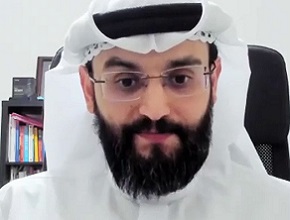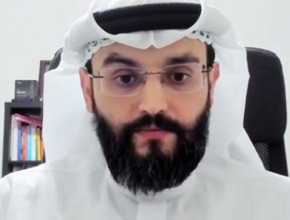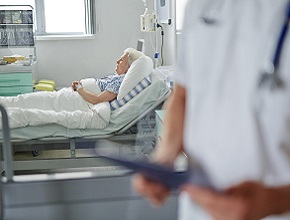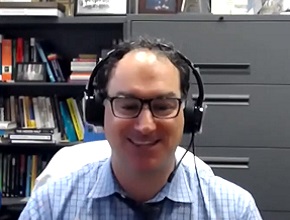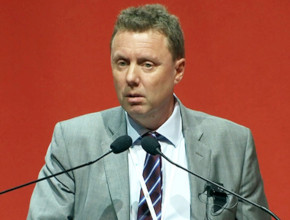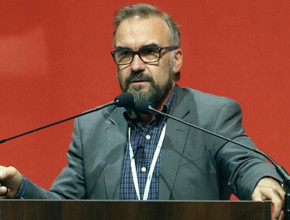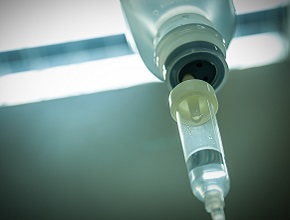A discussion from behind the scenes on the Surviving Sepsis Campaign 2021 guidelines between Dr Morten Hylander Møller from the Department of Intensive Care at Copenhagen University Hospital Rigshospitalet, Denmark, and Dr Roman Jaeschke.
Roman Jaeschke, MD, MSc: Good morning. Welcome to another edition of McMaster Perspective. Our guest today is Dr Morten Møller. Morten, maybe I will ask, to start with… Please introduce yourself and tell us a few words about yourself.
Morten H. Møller, MD, PhD: Thank you very much, Roman, and thank you for the kind invite. I work as an intensivist, a specialist in an intensive care unit (ICU) in Copenhagen, Denmark, and I also do research, including I’m involved in various guidelines, including this one.
Roman Jaeschke: And this one being the 2021 Surviving Sepsis Campaign [guideline]. Morten, could you tell us a few words about your role in the guidelines?
Morten H. Møller: Yes, thank you very much. In general, the guideline was chaired by 2 clinical chairs, Laura Evans and Andrew Rhodes, and also the Methods chair Waleed Alhazzani. I was the co-chair of one of the sections, the infectious diseases section, and this was together with the clinical chair Joost Wiersinga from the Netherlands.
Roman Jaeschke: OK. You know, a lot of our readers had seen these Surviving Sepsis [Campaign] practice guidelines. Maybe I will ask a little bit about the behind-the-scene questions. In your section, in the infectious diseases section, could you let us know what the most surprising effects of your work were? Something where you started and then you finished in a place different than what you expected?
Morten H. Møller: In general, I was positively surprised that we used a very rigorous methodology and that was nice. And I think that we managed to do that from the beginning to the final product, so that was a positive surprise. Also, I was surprised that the panel discussions were really, really constructive and productive. That was good, I think. Then we had some difficult recommendations to cover, or some difficult questions—maybe we can come back to that. I was surprised that... I think that we managed to provide a more nuanced approach to the management than previously.
Roman Jaeschke: So, no dramatic clinical surprises you are ready to disclose in the infectious diseases section. How about the practice guidelines in general? Was there something that changed your practice once you participated in this process or that was surprising in terms of its formulation?
Morten H. Møller: Again, I was positively surprised, first, that the panel [of] close to 60 people was very diverse. So, we had people from different regions, [of] different age, different gender, different specialties, and different backgrounds. That was also a positive surprise. And then [that] an entire section was actually devoted to long-term outcomes, including patient involvement. That was a surprise for me and a very, very positive one because that is seldom seen, I think. And again, there are challenging recommendations and it can be difficult to achieve 100% consensus both in the section I was in and also in general in the large panel, but I think that all the discussions were very constructive and productive.
Roman Jaeschke: OK. So, positive surprises so far.
Morten H. Møller: Yes, indeed.
Roman Jaeschke: Let’s go to some specific recommendations in your section. Let’s turn to the discussion about the 1-hour window to provide antibiotics. Any discussions there that are worth knowing about?
Morten H. Møller: It’s a challenging one and it has been discussed a lot previously also. So, there was a consensus in the panel that this was definitely a question that was prioritized and that should be included. Also, we decided that we would like to produce or provide a more nuanced approach to this, so, a more nuanced approach to how to manage the timing of antibiotics in patients with sepsis. We tried to do this by including information about the likelihood of infection—so, that could be either low or high—and also by including information about the condition of the patients—so, has the patient septic shock or not? And I think that we did succeed in providing a more nuanced approach using these 2 parameters. Also, I think that there is a nice graphic in the guideline that can be used [at the] bedside. Having said this, the evidence base now as compared to 4 years ago is more or less the same, and the certainty of evidence is not high. It’s rather low or maybe very low for some questions, including this. So, obviously, what is needed here is more research, and I do think that timing of antibiotics is a research priority.
Roman Jaeschke: Alright. Well, talking about the time, how about this 6-hour window for admission to the ICU? Were there any doubts about the... It’s not your section, but it’s a general section of how fast to admit people to intensive care. Was there controversy here?
Morten H. Møller: This was discussed as well because… this also has to do with the local organization of your hospital and it may vary from maybe low- and middle-income countries to high-income countries. So, obviously, this is a controversial question as well. But in general, the panelists agreed that admitting sick patients with sepsis into the ICU will likely improve the outcome and the quality of care. So, this is a good thing, which is why this was suggested.
Roman Jaeschke: Well, I hope it improves patient care. Otherwise we’ll lose our jobs, so it won’t be good...
Morten H. Møller: Yes.
Roman Jaeschke: Another question I wanted you to address here was the use of biomarkers. I’m talking about procalcitonin and C-reactive protein (CRP). Could you give us the flavor of discussion regarding the use of those investigations?
Morten H. Møller: Yes, that’s also a really good question, so this was also prioritized by the panel, I think mainly because procalcitonin is used in daily clinical practice. We framed 2 questions: Should you use procalcitonin to start antibiotics and should it be used to stop or de-escalate antibiotics? And when we looked at the literature, we proposed a weak recommendation against using it to start [antibiotics] as compared to looking at the clinical signs. And regarding stopping or de-escalating [antibiotics], we proposed a weak recommendation for using it.
Roman Jaeschke: Are you using it in your own unit?
Morten H. Møller: I’m not using it to start antibiotics—or we’re not using it in my unit to start antibiotics—but we use it sometimes to stop or de-escalate antibiotics. But this is obviously in combination with the clinical signs and clinical evaluation, so it’s not a standalone test.
Roman Jaeschke: Now, 2 specific questions about specific recommendations. One is about double empiric coverage, which is a controversial [issue] every time in our unit we do it. And the other one is about a prolonged infusion of beta-lactam antibiotics. Could you comment on those?
Morten H. Møller: Yes. For the first one, combination therapy, again, the evidence base is more or less the same for this iteration of the guideline as compared to the previous one. And again, we wanted to provide a more nuanced approach. This is why we included data on whether patients had a high risk or low risk of resistance. This was discussed in the panel both in our section but also in the large panel, obviously. I think that we came out with a reasonable approach to this. But again, as I mentioned regarding timing, this is a research priority and more firm evidence is needed for this question.
Regarding your second question on infusion of beta-lactams, we proposed a weak recommendation for using this. Actually the evidence base was high, so the certainty of evidence was high, but due to other factors, including availability, feasibility, and costs, we ended up with a weak recommendation for [using this]. So this, I think, was a good example of a thorough discussion in the panel, including going through the evidence to the decision framework for moving from evidence to recommendations.
Roman Jaeschke: And why is it difficult to accomplish that infusion rather than boluses?
Morten H. Møller: First of all, there is a cost issue here and also for most patients you would need a central line and that can be a problem somewhere. And also, an infusion on a central line occupies this line, and that can be a problem for some patients.
Roman Jaeschke: But if there is a possibility of starting an additional peripheral line, that would solve it, right?
Morten H. Møller: Yes.
Roman Jaeschke: Does the antibiotic cost differently or is it the cost of a pump and infrastructure?
Morten H. Møller: Yes. I mean, there are some expenses regarding infusion pumps, for instance, and lines, and that can be an issue, for instance, in low- and middle-income countries. This is why we didn’t feel that a strong recommendation was in place here.
Roman Jaeschke: Well, maybe we should start doing it in our units a little bit more [often], then. You provided a nuanced approach, but this nuanced approach also...
Morten H. Møller: At least we tried...
Roman Jaeschke: And I hear it repeatedly with different recommendations. And one is, for example—the first one we were talking about, you know—a different… [for example,] 1-hour [window] emphasis in people with high likelihood or lower likelihood of infection. It begs for recommendations of how to do that, how to recognize it. It carries its own problems.
And another nuanced one: You are recommending a shorter rather than longer use of antibiotics. Could you give us an example of what it means “shorter rather than longer?” One day versus 3 days? A week versus 2 weeks? What did you mean by it?
Morten H. Møller: Yes, both questions are really valid and good. So, for the first question, I agree that differentiating between low-risk patients and high-risk patients is rather easy when writing it, but in daily clinical practice this is more difficult. And again, I think this is a research priority. For instance, when should you initiate antifungal empirical therapy? So, this is an issue, and I agree this is more difficult in daily clinical practice, for sure.
And the other question about shorter versus longer duration of therapy. This obviously is very context sensitive, so it differs between different populations, different diseases. I mean, abdominal sepsis as compared to pneumonia, for instance, and so forth. So, it differs. In the supplementary material we have provided an overview of the existing evidence, including what the individual original studies define as short versus long duration. This could provide input on the specific duration you should choose. But again, as also highlighted in some of the other recommendations, you also need to look at the clinical condition of the patients. And regarding the de-escalation or stopping of antibiotics, procalcitonin can also be an adjunctive or provide additional information.
Roman Jaeschke: When I looked at this additional material… I needed to remember something rather than look at [individual figures] each time, and what sticks in my mind is that shorter was anywhere from 5 to 8 days and longer was 10 to 14, or even 21 in general. Are you using selective decontamination in your unit?
Morten H. Møller: We’re using it sometimes, but rarely. Very rarely.
Roman Jaeschke: Well, we are using chlorhexidine very regularly now as part of it or as a substitute and, as you probably know, the evidence is a little murky here.
Morten H. Møller: Yes, exactly.
Roman Jaeschke: The last question. You participated in this process. Are there changes in your practice that you [have] introduced already as an effect of participating in those guidelines?
Morten H. Møller: Actually, we are going to discuss it in my unit. I will present it next week in my unit and we will discuss key areas, including whether we should change practice here. But obviously, I need to take care of my disclosures regarding this. So, this will be a discussion in the unit, but I will present it and we will discuss whether there are any [areas] where we should change practice based on this.
Roman Jaeschke: Can you disclose what you would recommend? Or what you believe should change?
Morten H. Møller: I think that some of the recommendations we have discussed here, including timing and use of procalcitonin, I think those are important to discuss in your unit.
Roman Jaeschke: OK, Morten, thank you so much for your time and I hope this discussion from behind the scenes will be of use to our listeners. Thank you very much and have a good day.
Morten H. Møller: Thank you very much and you’re welcome.
Roman Jaeschke: Thank you.
 English
English
 Español
Español
 українська
українська

